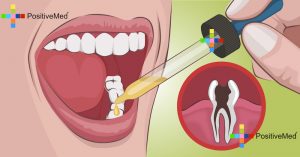Heart cells were often thought to be our body’s oldest cells, but thanks to new research, scientists are rethinking this idea. This new research will leave you wondering “how old are your organs?”.
Cells Are Older Thank You Think
Scientists are just learning that the cellular structures in the human body may be as old as the rest of the organism itself. This indicates that there’s an even greater level of complexity in our bodies than we’ve been led to believe. If this research about old cells is true, this has major implications for how our bodies age.
When beginning this research, scientists consider the fact that the brain’s neurons don’t divide in adulthood, resulting in a longer lifespan. However, because of technical limitations, cells outside of the brain are typically difficult to determine. With this new research, scientists now have an answer to the questions, “How old are your organs and their cells?”
In the past, biologists have thought that neurons were the oldest parts of the human body, while other cells were younger since they regenerate during their lifetime. However, researching old cells has led scientists to figure out whether or not other organs have cells that are also as long-lived as the brain’s neurons.
Understanding Age Mosaicism
Researchers know that neurons aren’t often replaced during the organism’s lifetime, so they use them as a type of “age baseline” and compare them to other non-dividing cells. In a study to search for other older cells, a team of scientists combined the method of electron isotope labeling with MIMS-EM (a hybrid imaging method) to quantify and visualize protein age, cell age, and the level of turnover in the livers, pancreases, and brains of older and younger rodents.
When validating this method, scientists determined the neurons’ age and discovered them to be the same age as the organism. However, scientists were surprised to find that cells inside the rodents’ blood vessels (endothelial cells), were just as old as their neurons. This startling discovery means that non-neuronal cells don’t replace or replicate themselves in the organism’s lifespan.
During this study, the pancreas showed signs that its cells were of various ages. Similarly, portions of the rodents’ pancreas appeared to be a combination of old and young cells. The pancreas surprised scientists as it is an example of the phenomenon known as age mosaicism–a population of indistinguishable cells that are different ages.
The Age of Your Cells
Scientists realize that determining how old subcellular structures and cells are will allow them to gain new insights into how the body’s methods for cell maintenance and repair work, as well as how cumulative change impacts cells throughout adulthood. The ultimate goal of such research is to learn to use these cellular mechanisms to delay or prevent cellular decline of certain organs that have limited cell renewal.
These scientists hope to apply this research in their endeavor to decipher lipids and nucleic acids’ lifespans. Similarly, they want to better understand how age mosaicism is linked to diseases and our overall health.
As scientists continue their research, it’s safe to say that there is no one answer to “How old are our cells?” Just as the cells in these scientists’ test subjects vary greatly in age, the same is likely true of their human counterparts.







